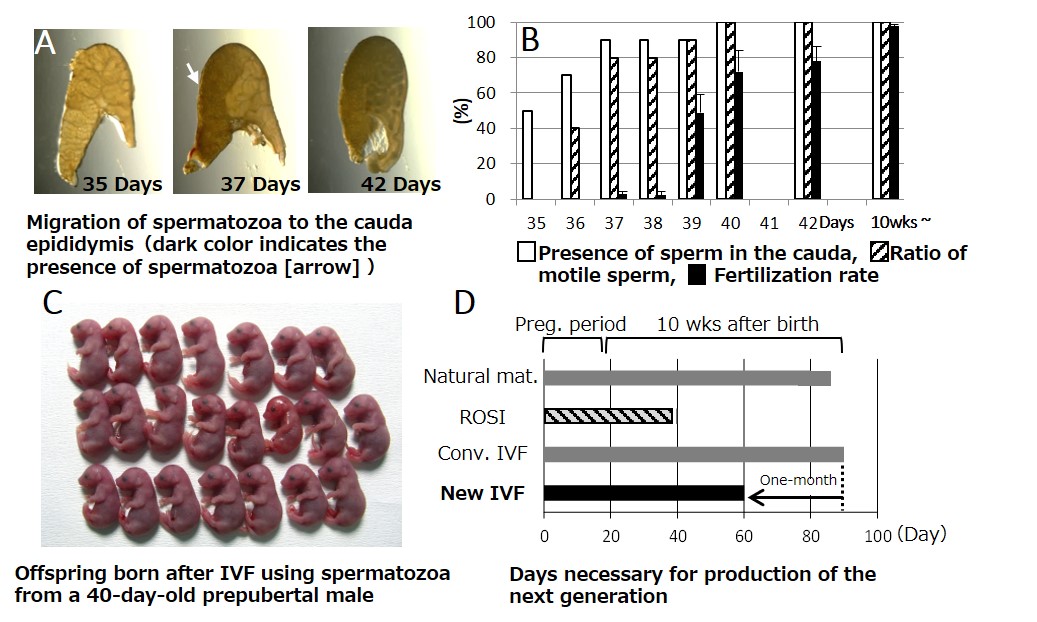
|
13. In vitro fertilization using first-wave
|
| In vitro fertilization is essential for the preservation of mouse strains and the generation of genetically modified strains, and is used in many facilities around the world. Its general protocol recommends the use of males at 10-12 weeks of age or older, but the data that support this notion are not clear. We investigated the age of the earliest males that could be used for IVF.
In C57BL/6 mice, spermatozoa were observed in the cauda region of epididymis in 50% and >90% of males aged 35 and 37 days, respectively. (Fig A). We found that 37 days was the youngest age at which males were able to produce sperm with the fertilizing ability. Practical fertilization rates (> 70%) were obtained at 40 days or older (Fig B). We also found that the addition of reduced glutathione to the IVF medium significantly increased the fertilization rate. Fertilized eggs obtained from 40-day-old males resulted in 95% implantation rate and 52% birth rate (Fig C). Thus, spermatozoa from males at 40 days or older can be used stably for IVF and can produce the next generation approximately one month earlier than natural mating or conventional IVF protocols (Fig D). This technology is expected to be efficiently used for generating congenic mice by backcrossing and individuals of disease models that develop the disease prematurely. |
| Reference: | K. Mochida et al. “Early production of offspring by in vitro fertilization using first-wave spermatozoa from prepubertal male mice.” J Reprod Dev., 65: pp. 467-473. 2019. |





